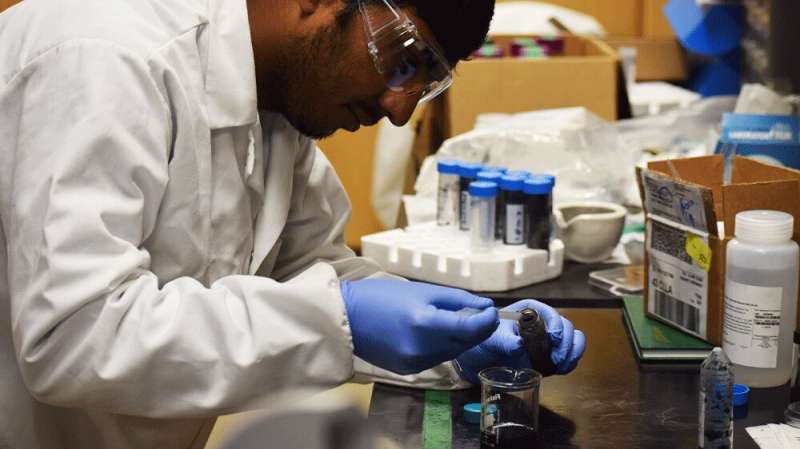
Researchers at Texas A&M
University and ExxonMobil are developing a method to reprocess petroleum coke—a
byproduct of refining crude oil—into a sustainable, high-value alternative.
Using a chemical process called electrochemical exfoliation, they have
converted petroleum coke into graphene, a nanomaterial with applications in
electronics, medicine and energy storage.
Crude oil is a mixture of many different hydrocarbons, with light portions going to natural gas while the heaviest portions form viscous or even solid materials. One of the many products that comes from refining crude oil is solid petroleum coke.
Although there are many ways to utilize petroleum coke, such as electrodes for steel and aluminum production, this process releases harmful carbon emissions. For this reason, the industry is looking for low-emissions, high-value materials that can be derived from crude oil.
A possible solution is repurposing the carbon-rich petroleum coke to generate graphene, a versatile sheet-like material composed of a single layer of carbon atoms. Conventionally, graphene is exfoliated from graphite. The researchers investigated whether any chemical processes would facilitate graphene production from fossil fuel-derived materials.
"We know that petroleum coke contains graphene-like materials," said Dr. Micah Green, professor in the Artie McFerrin Department of Chemical Engineering at Texas A&M. "Our challenge was to isolate the graphene from the starting material."
To accomplish this task, the researchers turned to electrochemistry. They placed coke into an electrolyte solution with a working electrode and a counter electrode. When they applied voltage to the working electrode, the ionic species or negative ions from the electrolyte migrated in between the graphene sheets in a process called intercalation.
"Think of the coke as a book and the graphene as each individual sheet of paper," said Green. "When the book is laid flat on its spine, the pages fan out and have more gaps between them. The process of electrochemical exfoliation is similar."
When the coke is expanded, the graphene separates. Negative ions are created and move into the spaces between the graphene sheets, completing the coke byproduct and graphene separation.
Many graphene applications require high conductivity, but whether the graphene from petroleum coke could achieve such performance was unknown. The graphene created from the coke had a conductivity of 50 siemens per meter compared to a typical lithium-ion battery, whose electrical conductivity is about 150-160 siemens per meter. With a heat treatment called annealing, the researchers could boost the conductivity even higher, making it comparable to electrodes in lithium-ion batteries.
With these findings, graphene applications that have been in development for years could come to fruition.
"The future of nanomaterial scaleup is directly tied to existing streams in the petrochemical industry, and I anticipate many more cases where petroleum-derived chemicals are converted to high-value carbon materials like graphene," said Green.

 Previous page
Previous page Back to top
Back to top







